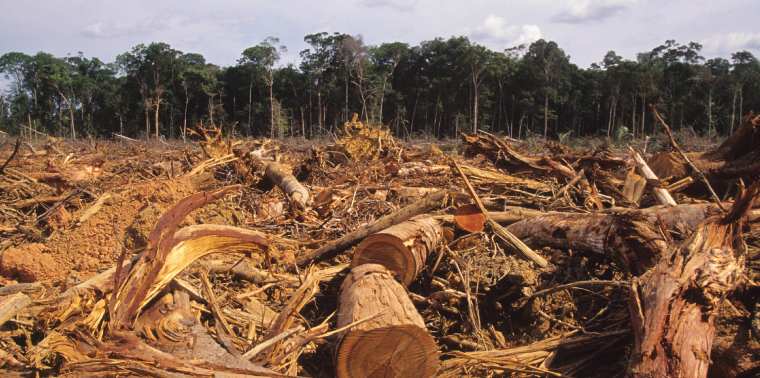July 9, 2014 — Jeannette Kawas was an accountant whose concept of value was broader than any balance sheet. No number could capture for her the natural wealth she saw in the forests, rivers, beaches and mangrove swamps of Punta Sal, near her hometown of Tela in northern Honduras.
In the 1980s, cattle ranchers, resort developers and loggers all wanted a slice of this landscape. As their hunger grew, Kawas formed an environmental organization, PROLANSATE, to protect the land, and in 1994, it convinced the government to allow it to create and manage a new national park there.
Within three months PROLANSATE renamed Punta Sal National Park to honor its founder, who was shot dead in her home on February 6, 1995. Years later a ruling from the Inter-American Court of Human Rights said Kawas’s work in defense of the environment had motivated the murder.
Global Struggle
Kawas was a victim of a largely unreported war that still rages around the world two decades later. Its casualties are women and men who through peaceful acts work to defend their local environment from polluters and miners, land grabbers and loggers. In the past decade, close to 1,000 such activists in 35 countries were murdered, according to a report published in April 2014 by Global Witness.
“This report is a good one to alert people to the sad reality at hand,” says Alfredo Quarto, executive director of Mangrove Action Project, which has documented murders of activists and community leaders who stood in the way of shrimp farmers. “In a five-year period in the 1990s, over 100 local community members and activists were killed protesting shrimp farm encroachment and mangrove loss in Bangladesh. Similar reports of murdered community leaders who stood in the way of shrimp farmers come from Thailand, India, Honduras, Ecuador and Brazil.”
The globally reported murder rate has risen in recent years: In 2012, the last year for which there are reliable figures, it approached three per week.
To tally the body count, Global Witness researchers scoured hundreds of credible, published and publicly available sources. They included only cases that stated the name of the victim, the nature of the death and the date, and for which the murder had a clear connection to the environment or land rights. Alice Harrison, a consultant with Global Witness, says the numbers underestimate the problem because levels of reporting are low, especially in Africa.
The globally reported murder rate has risen in recent years: In 2012, the last year for which there are reliable figures, it approached three per week. Harrison says it is unlikely that monitoring has increased enough to account for this increase in reported deaths, and that the real explanation is an ever faster race to profit from ever scarcer land and resources.
The report says that what’s behind that race to profit is consumer demand for electronic goods, tropical timber, beef, oil and — thanks to the ubiquity of palm oil in modern products — even mundane things such as toothpaste and peanut butter. Contributing to the problem are cash, corruption and a culture of impunity.
Accidental Heroes
“Violence often results from powerful elites cashing in on resources for short-term export earnings from large scale production,” says Oliver Courtney, a senior campaigner at Global Witness. “This issue has its roots on our shop floors and living rooms. The growing pressure on resources that leads to conflict and killing is a product of overconsumption, largely in the rich world, driving demand for cheap commodities. ”
“Many of those murdered were ‘accidental’ human rights defenders,” says John Knox, a professor of international law at Wake Forest University and independent expert on human rights and the environment of the United Nations Human Rights Council. “They got involved because it was their own land, their own forests, their own water they were defending.”
When such people try to protest they may be met with threats, violence, unlawful detention and even death.
“What’s really unfortunate is that the contest is so one-sided,” says Knox. “On one hand are extremely powerful economic interests. On the other are people who are often marginalized in society, people who have not got allies and who are not very sophisticated in knowing what’s going. Often they first find out they are subject to a government decision when the bulldozers arrive, or the trees start falling or they get evicted from their land.”
When such people try to protest they may be met with threats, violence, unlawful detention and even death. In only about 1 percent of the murders Global Witness documented has the killer been tried, convicted and punished.
“There’s a screaming lack of political will,” says Harrison. “Some killings are at the behest of political actors or private sector companies linked to politicians. Some are not reported and followed up. There’s a fear of reprisals.” In the case of Jeannette Kawas, several reports from government agencies, including one from the attorney general’s office, include allegations that named members of the state security forces were involved in her murder. But nobody has been tried or convicted.
In 2013, a study estimated that Jeannette Kawas National Park provides ecological goods and services worth $46 million per year. That’s close to a billion dollars of uncounted benefit since the park’s creation in 1994. If Kawas had been armed with these numbers 20 years ago, perhaps she would be alive today.
Stemming the Flow
With the death toll rising, organisations like Global Witness want to stimulate action both in countries where the killings take place and in countries in which consumers, journalists and governments can exert some influence.
“It’s a combination of working with organisations at the grassroots that encounter these crimes, raising awareness and funnelling it upwards,” says Harrison. “We want governments to monitor this and bring perpetrators to justice. We are working at the international level to do this and hold governments to account.”
Experience shows that people are generally safer if they are known internationally, so Global Witness plans to work with partner organizations around the world to develop an early warning system that can raise the profile of environmental defenders and their struggles. “We don’t want to look only at deaths, when it is too late,” says Harrison.
“Norway now obliges companies to disclose their environmental impacts, and its food companies now publish their use of palm oil. As a result, Norway’s food sector reduced palm-oil consumption by two-thirds in a single year.” — Oliver Courtney
In a similar vein, an international network of researchers from universities and nongovernmental organizations has developed the Environmental Justice Atlas, an online map and database of stories of more than a thousand ongoing environmental conflicts that users can search by commodity, country or company.
Global Witness wants to see a fall in consumer demand for products linked to violence — such as timber, soya and palm oil. “Governments need to legislate for this and enable consumers to make informed decisions,” says Courtney. “Norway now obliges companies to disclose their environmental impacts, and its food companies now publish their use of palm oil. As a result, Norway’s food sector reduced palm-oil consumption by two-thirds in a single year.”
Rights vs. Wrongs
According to the Treaty Alliance, a global coalition of more than 500 civil society groups, what’s needed is a legally binding international treaty to address human rights violations by corporations. The alliance is urging the U.N. Human Rights Council to set this in motion. Governments, meanwhile, already have obligations under human rights law to protect citizens who speak out about development choices or environmental protection, as the case of Jeannette Kawas shows.
In a landmark ruling in 2009, the Inter-American Court of Human Rights declared that Honduras violated several rights to the detriment of Kawas and her family. It ordered Honduras to make amends in several ways.
In a public ceremony in June 2010, the Minister for Interior and Justice of Honduras apologized and took responsibility for Kawas’s death. Yet Honduras failed to meet the court’s deadline for erecting a monument to Kawas, starting criminal proceedings against her killer or carrying out a national campaign to raise awareness of the work of environmentalists in defense of human rights.
Between 2011 and 2013, the Global Witness report shows, another 74 environment defenders were murdered in Honduras alone. With vast profits at stake and powerful interests pitted against poor and marginalized communities across the world, the body count is likely to rise.
“I don’t think it is a losing battle these people are fighting,” says Knox. “It has real victories, but they need help.” It is in the power of governments, companies and consumers to provide that help and give tomorrow’s grassroots environmental defenders hope that they can be heroes without being martyrs, too. ![]()
Ensia shares solutions-focused stories free of charge through our online magazine and partner media. That means audiences around the world have ready access to stories that can — and do — help them shape a better future. If you value our work, please show your support today.
Yes, I'll support Ensia!

Especially significant is the Epilogue addressing the controversial subsequent Cabrera/Montiel v. Mexico case, including critical advice for all human rights defenders, particularly land & environmental defenders and those shining a spotlight on & helping to protect these courageous activists..
Even though this case took place in the Inter-American Human Rights Court, its precedent-setting requirement that governments must protect at-risk environmental activists has global relevance, and should be utilized & cited in every possible context by these defenders who are being attacked and criminalized around the world.
PDF to download
Full text online
Contact info
I wonder about your opinion on the implications of the IAHRC-ruling in the Kawas-case that governments have a duty to protect at-risk environmental defenders? (see Lauri Tanner's post)